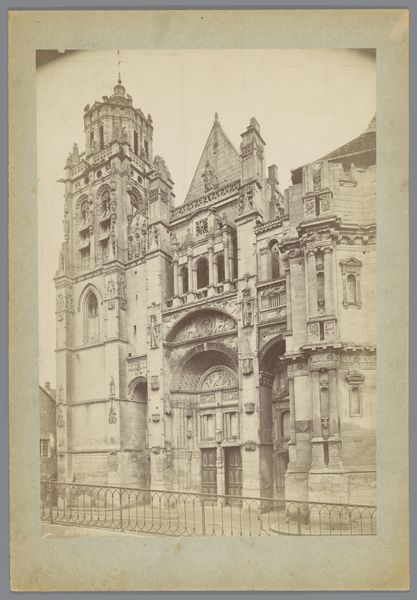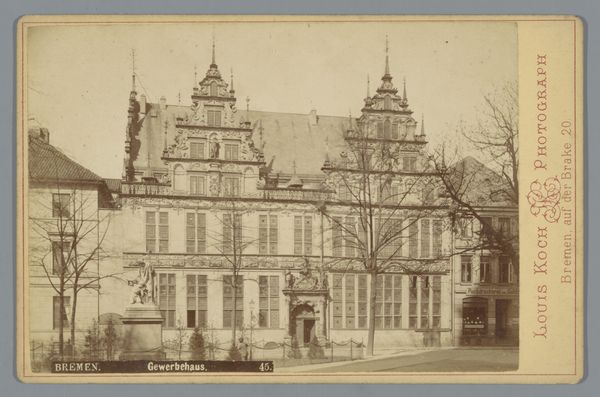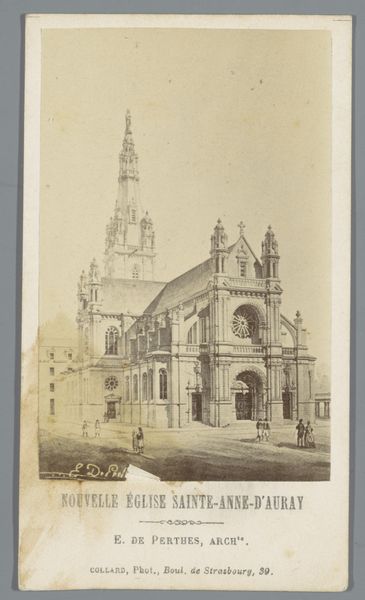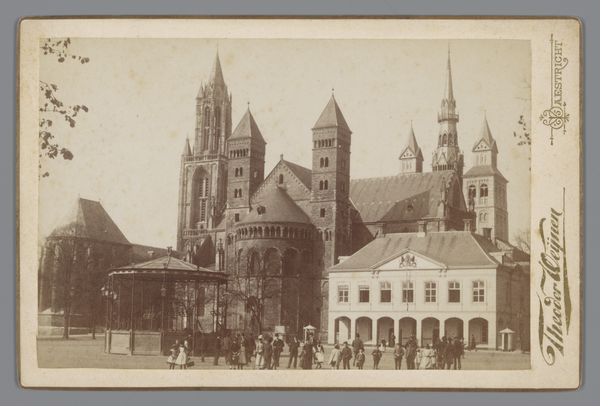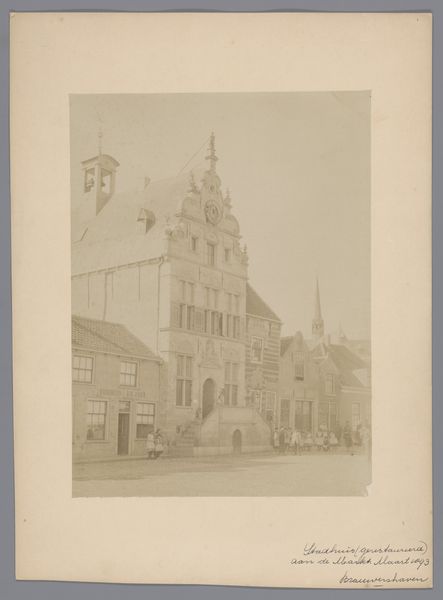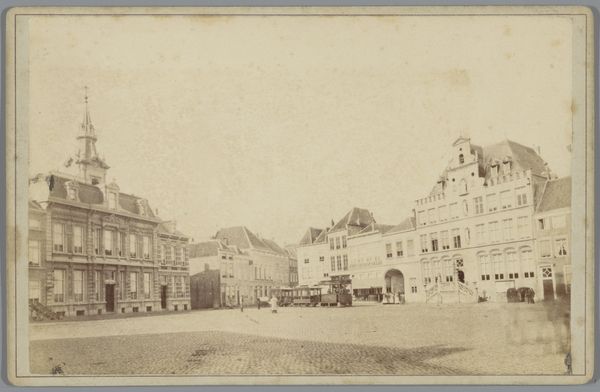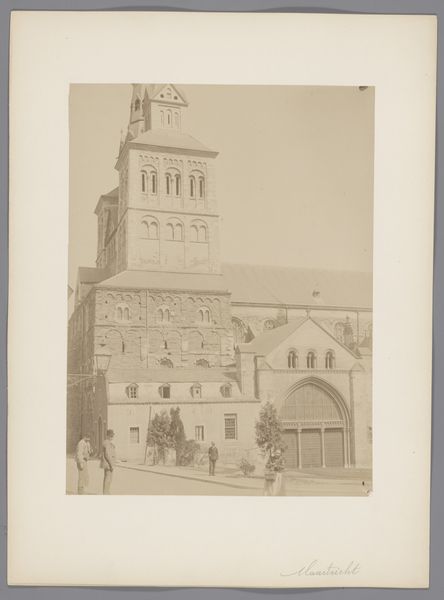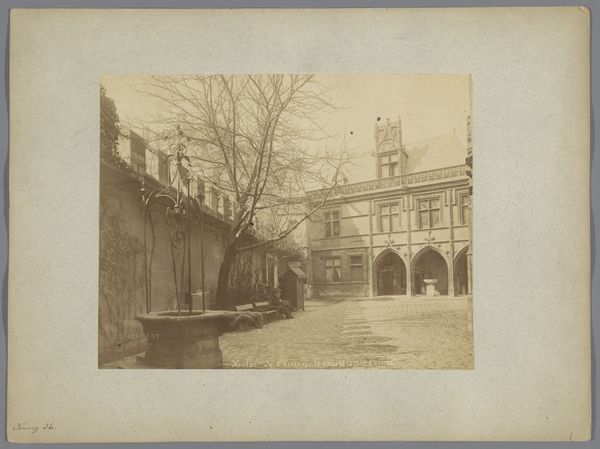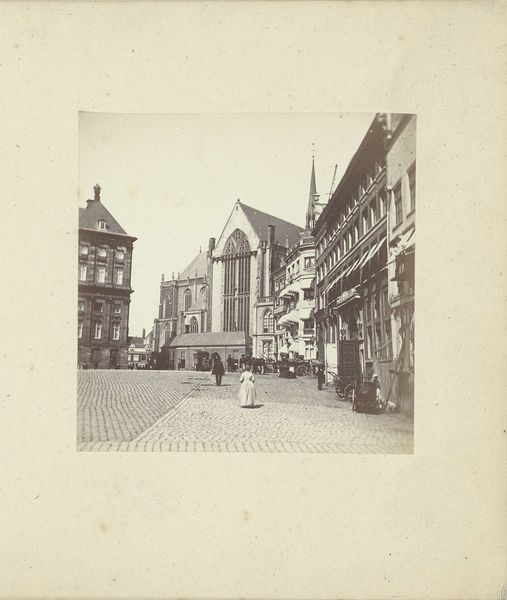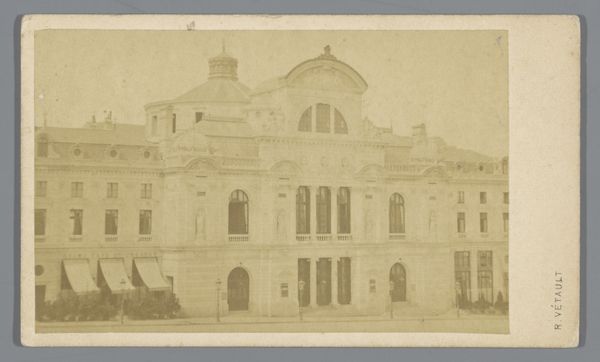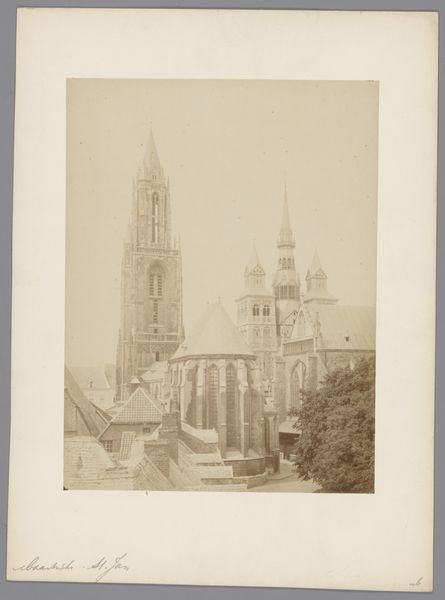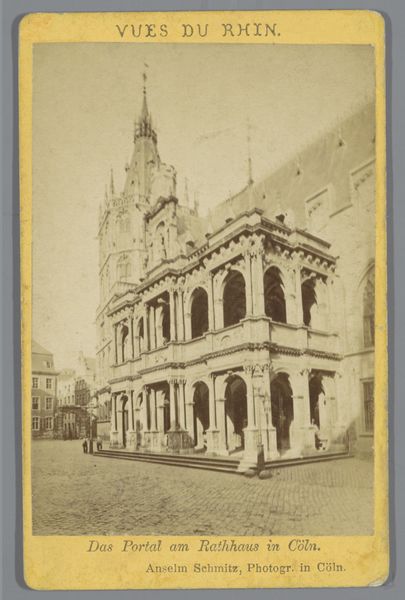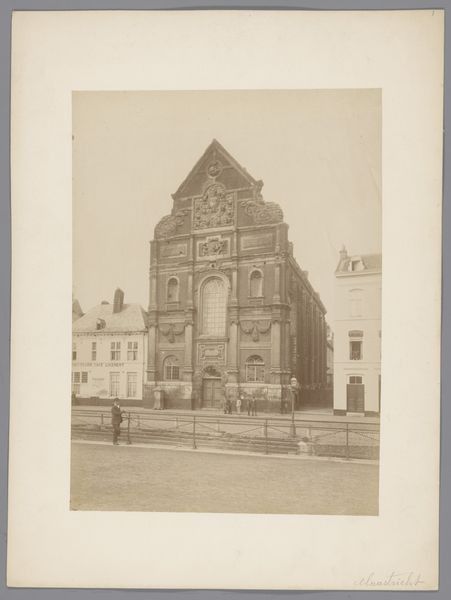
print, photography, albumen-print
#
dutch-golden-age
# print
#
photography
#
cityscape
#
albumen-print
#
realism
Dimensions: height 66 mm, width 108 mm
Copyright: Rijks Museum: Open Domain
Curator: Here we have a photographic print dating from sometime between 1850 and 1900, “Gezicht op het Binnenhof in Den Haag,” by Jules Hippolyte Quéval. Editor: The Binnenhof... It has such a formal presence, almost severe. Stark buildings, monumental, but the albumen print gives it all a dreamy softness, like a half-remembered memory of a seat of power. Curator: Yes, the albumen process certainly lends a particular character. Developed in 1850, it involves coating paper with egg white and silver nitrate, resulting in sharp details and that distinctive sepia tone we see here. You get this incredible level of detail balanced by the limitations of the printing method. Editor: Right! I notice how the sharpness accentuates the rigid lines of the architecture. There is that Gothic Hall dominating one side of the square and the formal facades of the government buildings beside. I wonder, was the choice of this relatively new technology in photography intentional in this case? What could it have meant to record these physical symbols of the ruling class in this way? Curator: That is a fantastic point. The mass reproduction enabled by photography democratizes access, if only visually, to spaces formerly reserved for the elite. The labor invested in this early form of photography—coating, sensitizing, exposing, developing—is also considerable, challenging any easy distinction between art and craft. It also opens questions on who is consuming images and why. Editor: It’s like catching the powerful at a moment of transition, really. Capturing them as technology begins to chip away at some of their inaccessibility. The subtle imperfections in the albumen—a few stains or spots here and there—also suggest the image's own material vulnerability and the passage of time, contrasting beautifully with the impression of timeless authority of those imposing buildings. Curator: Exactly. The choice of albumen also reflects its broad appeal across classes during that period, with various applications spanning professional documents and personal mementos. In the context of this print, albumen photography becomes more than just a means of documentation; it provides a means of expanding visual accessibility. Editor: So the image manages to encapsulate the rigid nature of power and the ways it starts to erode through mechanical production... What a perfectly balanced tension. Well, that made me think of those spaces in an entirely new light. Curator: And to consider the intersection of material processes and societal access when analyzing the image; an essential dialogue, indeed!
Comments
No comments
Be the first to comment and join the conversation on the ultimate creative platform.
